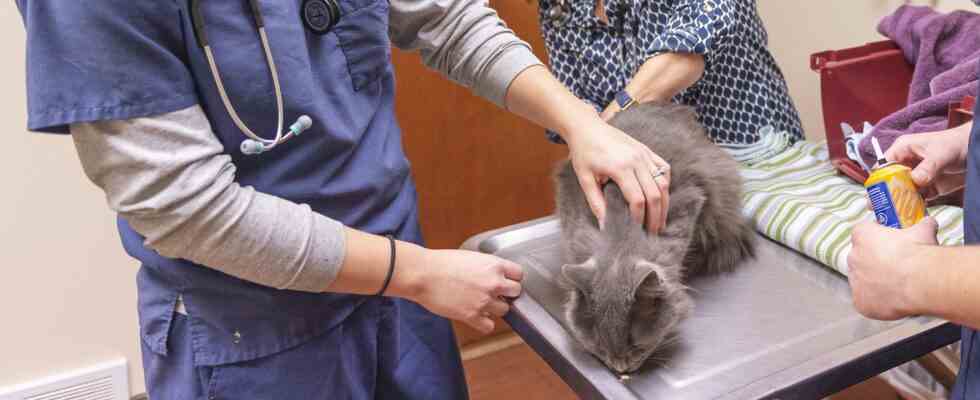Status: 17.09.2022 5:39 p.m
More and more veterinary practices and clinics are being taken over by large chains backed by the Mars or Nestlé corporations. This has consequences for dog or cat owners.
While many pet owners are fiercely debating the increase in veterinary fees in November, a change in veterinary medicine is taking place in the background that could have far greater consequences for the wallet. The food giants Mars and Nestlé are buying up veterinary clinics and practices on a large scale. They are attempting to conquer the German market through their subsidiaries or holdings, Anicura and Evidensia.
Costs so far lower than elsewhere
“Germany is still decidedly cheaper than the rest of Europe when it comes to fees for veterinarians. This is changing and is painful for many pet owners,” says Ralph Rückert, a veterinarian from Ulm who is involved in the Society for Free Veterinary Medicine (GFT). In this country, the costs for veterinary visits are on average half as high as in Great Britain, for example. “Germany is an attractive market with a lot of upward potential,” says Rückert. This explains the investors’ interest: of the approximately 250 veterinary clinics currently in existence, more than 60 are now in the hands of AniCura, while Evidensia already has 60 practices and clinics, according to the Federal Cartel Office.
In Sweden, AniCura was the first chain founded in 2011 by the investment company Fidelio Capital and the Stockholm Veterinary Hospital Foundation, followed in 2012 by Evidensia as a merger of four Swedish veterinary hospitals. Both expanded quickly and soon became active in other European countries. Anicura has since been taken over by Mars, and Evidensia is backed by the Nestlé Group and financial investors.
There is a lack of young veterinarians
The fact that the chains are spreading in this way is also due to a home-grown problem with the veterinarians. Around 1,200 graduates graduate from the five veterinary faculties every year, but fewer and fewer of them apply for a license to practice medicine. At the same time, more and more of the approximately 12,000 resident veterinarians are reaching retirement age and are looking for successors. “Young veterinarians are no longer willing to see a 60-hour week as normal like my generation did,” says 62-year-old Rückert. If a veterinarian cannot find a successor, the chain is often already in the starting blocks – with a lot of money in the background and attractive conditions for taking over the clinic or practice.
As a representative of the Chamber of Veterinarians, Peter Schieber from Ottensoos in Middle Franconia sees this development as a medical group in a differentiated way. “We have a laughing and a crying eye here, because the profits that can be made in veterinary medicine are skimmed off by the chains. On the other hand, of course, they also offer their employees the opportunity to work part-time, for example.”
Expensive devices have to pay for themselves
In addition, medical development has progressed rapidly and today CT or MRI are standard – devices that a lone fighter may not immediately acquire in his practice. This is where the chains come into play, which due to their size and financial strength offer the most modern devices and therapy options. On the one hand a plus, says veterinary representative Schieber. But a number of veterinarians are very critical of this, because these devices must ultimately pay for themselves.
On the Internet you can find many bad reviews of clinics that belong to chains. There is talk of “rip-off” or “treatment on the assembly line”. In some regions, however, there are no longer any alternatives, pet owners must be happy to find a veterinarian with emergency service at all. “In the end, monopolies are always bad for consumers, in this case pet owners,” warns veterinarian Rückert.
“A return of five percent is enough for them”
The experience of the Chamber of Veterinarians is that the schedule of fees for veterinarians (GOT) tends to be designed upwards in clinic chains. Everyone must adhere to the GOT, but may “at their reasonable discretion” demand multiple rates or make free fee agreements. “Our experience is that clinic chains tend to bill at the upper end of the GOT and the individual veterinarian tends to bill at the lower end because of empathy for the animal and owner,” says Schieber.
The new GOT, according to which billing must be carried out from November 22nd, provides for an average increase of around 20 percent; individual items are significantly more expensive, others cheaper. Right now, the increase in a cat’s exam has outraged many on social media. The cost increases from 8.98 euros to 23.62 euros, and this 170 percent increase causes excitement. The GOT was last updated in 1999, and since then, according to a study, practice costs have increased by 30 to 40 percent.
“The turnover of veterinary practices in Germany increased by ten percent in 2021,” says Schieber. “A group like Mars likes to siphon off the profits. A return of five percent is enough for them, while others currently have nothing with zero interest.”

